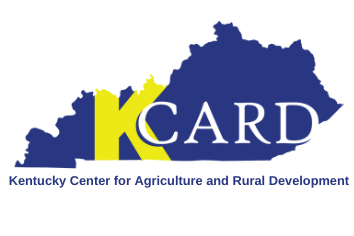Have you heard of a hashtag? A hashtag is an online tagging device used on certain social media platforms. Using hashtags helps others easily find content centered on a certain theme or subject. A hashtag starts with the number (#) symbol followed by a series of words. Placing the hashtag symbol before the words will automatically turn the phrase into a searchable link.
Top 5 Tips for Direct Marketing Meat
Direct marketing is a wonderful way to promote your farm and fulfill a need for consumers. Our guest blogger, Dr. Gregg Rentfrow, has been with the University of Kentucky Cooperative Extension program since 2006 as the Meat Specialist. Dr. Rentfrow works closely with meat and livestock producers, and the 4-H and FFA programs in the state to provide training and education about meat production. Dr. Rentfrow is a trusted and valued resource for KCARD wit his extensive knowledge of the meat and livestock industries and has participated in several KCARD Marketing Locally Grown Meat workshops in the past.
Q&A with Olivia: Local Food, Increasing Your Markets
Olivia Vogel, KCARD’s new Local Food Project Coordinator, took a little time to answer some questions about herself, the new Local Food Initiative Expansion Project, and give some helpful tips for producers interested in expanding their markets.
KCARD’s Local Food Expansion Initiative
The Kentucky Center for Agriculture and Rural Development (KCARD) is launching the Kentucky Local Food System Expansion Initiative to expand the work of multiple organizations that have laid a foundation in Kentucky for local food purchasing. Organizations involved in the project include the Kentucky Department of Agriculture, Kentucky Horticulture Council, Feeding Kentucky, Bluegrass Farm to Table, the University of Kentucky, and the Community Farm Alliance.
Social Selling – What it means to your online marketing
Chances are you are already doing some social selling if you have a Facebook business page, Instagram business page, or professional Twitter page. So, what is social selling? It is the art of using social media to find, connect with, understand, and nurture sales prospects. In short, it is the modern way to connect with current and potential customers to develop meaningful relationships. The goal with social selling is to bring value to your customer by anticipating their needs rather than just spamming them with “buy now” posts. We’ve put together some best practices to include with your social selling strategy.
Email Marketing 101: What is it? Why it’s Important to Your Business.
Did you know that the average email subscriber receives about 13 commercial emails each day? How does your business break through that fog of emails to reach your customer? We’ve included a few tips below to help you get started, in addition to these marketing basics.
Targeting the “New” Home Cook
Fact: people are cooking and eating at home more. Those who weren’t cooking at home are now making meals several days a week for their families. Of those making meals at home, 35 to 40% of them started cooking for the first time, according to global management consultant SSA & Company. So, what does that mean for your food business? How can you educate new customers about your products so that you retain them once things get back to normal? Below are a few ideas for targeting the “new” home cook.
New Ways to Collaborate
With restrictions on in-person sales and the challenges many markets are now facing, it is more important than ever to collaborate with neighbors and fellow producers. Collaboration can open new doors such as new customers, new retail locations, or the ability to sell online. We have listed a few ways you can collaborate with neighboring growers to give new and existing customers access to your products.
It’s the Little Things that Matter: Online Communications
Some of you are ramping up your online communications for the first time. It’s easy to make some rookie mistakes in the process. Here are a few we have seen recently come across our desk that we wanted to point out.
Key Thoughts for Distribution
This past week, the Kentucky Center for Agriculture and Rural Development (KCARD) partnered with UK’s Center for Crop Diversification (CCD) on a webinar comparing the pros and cons of farm-to-consumer distribution methods including On-Farm Pickup, Off-Farm Pickup, Home Delivery, and Shipping.
One thing we want to emphasize is that your business doesn’t need to do it all – i.e. offer every distribution method mentioned above. What works for one farm business might not work for yours. Below are a few key thoughts when it comes to picking a distribution method or two.











